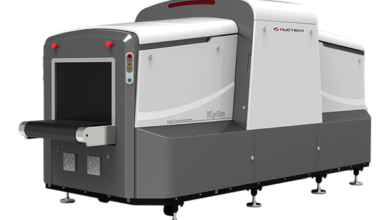Reasons Why AEC Automotive Testing is Essential for ICs

As cars get smarter and more connected, the small electronic parts inside, like integrated circuits (ICs), need to function properly even in tough conditions. EC Automotive Testing refers to a set of standards created by the Automotive Electronics Council (AEC) to ensure that these electronic components, such as chips, used in vehicles are reliable and durable.
These standards make sure the components can handle harsh conditions, such as high temperatures, vibrations, and electrical stress, which are common in cars. AEC testing helps make cars safer, ensures the parts last longer, and supports the development of smarter, more dependable vehicles.
What is AEC Automotive Testing?
AEC Automotive Testing refers to qualification standards set by the Automotive Electronics Council (AEC) to ensure the reliability and durability of electronic components, such as chips (ICs), used in vehicles. These standards ensure that the components can withstand harsh conditions like high temperatures, vibrations, and electrical stress, which are common in automotive environments.
Overview of AEC-Q Standards
These are the main AEC standards (commonly known as AEC-Q standards) used to qualify different types of automotive components:
1. AEC-Q100 – For Integrated Circuits (ICs)
AEC-Q100 is a reliability standard for integrated circuits (ICs), including microcontrollers and sensors, used in critical automotive systems like engine control and safety features. It ensures these components can perform reliably under harsh conditions.
2. AEC-Q101 – For Discrete Semiconductors
Includes devices like transistors and diodes used in power and signal control.
3. AEC-Q102 – For Optoelectronic Devices
Covers components like LEDs and photodiodes used in lighting and sensing.
4. AEC-Q200 – For Passive Components
Applies to resistors, capacitors, inductors, and similar parts used in filtering, timing, and energy storage.
Each standard outlines stress tests that mimic the demanding conditions inside a car.
What Components Are Covered?
AEC-Q standards apply to a wide variety of automotive electronic components, such as:
- ICs: Used in engine control units (ECUs), infotainment systems, and safety electronics.
- Discrete Semiconductors: Transistors and diodes for power management and signal processing.
- Optoelectronic Devices: LEDs and sensors used in lighting and driver-assist technologies.
- Passive Components: Resistors, capacitors, and inductors are needed for power regulation and noise filtering.
Why AEC-Q Testing Matters for Automotive Electronics
AEC-Q testing is crucial in automotive electronics because it ensures that car parts can handle tough conditions, last over time, and contribute to safety and performance.
1. Survive Tough Conditions Inside Vehicles
Car parts are exposed to extreme temperatures, vibrations, and other harsh conditions. The AEC-Q standards (such as AEC-Q100 for IC chips, AEC-Q101 for components, and AEC-Q200 for passive parts) define specific tests to ensure components can endure these challenges. For instance, AEC-Q100 tests how parts withstand temperature fluctuations and high heat to prevent failure.
2. Perform Reliably Over Time, Reducing Failures
Reliability over the long term is key. AEC-Q testing includes accelerated life tests, which predict how long parts will last. This helps manufacturers catch potential problems early, reducing the chances of unexpected failures while the car is in use.
3. Support Vehicle Safety and Performance, Boosting Consumer Trust
When parts meet AEC-Q standards, they ensure vehicles stay safe and perform well, which boosts consumer confidence. For example, AEC-Q007 ensures that components stay intact after they are installed on circuit boards, which is essential for board-level reliability.
AEC-Q testing ensures that automotive parts can endure tough conditions, work reliably over time, and help keep cars safe and performing well. This testing also builds trust in automotive brands and their products.
Key Reasons AEC Testing is Essential for ICs
AEC testing ensures that the electronic chips (ICs) in vehicles are safe, reliable, and perform effectively. These tests follow strict guidelines set by the Automotive Electronics Council (AEC), especially the AEC-Q100 standard for ICs. Here’s why this testing is so important:
1. Ensures Safety and Reliability
AEC-Q100 testing ensures ICs, which control crucial vehicle systems like braking and engine management, are safe and reliable. It subjects these chips to extreme stress tests to ensure they perform well under harsh conditions and prevent failures that could cause danger.
2. Proves Durability in Harsh Environments
Cars operate in challenging settings with heat, cold, moisture, and constant vibrations. AEC-Q100 testing mimics these real-world conditions to make sure the ICs won’t break down or lose performance over time.
3. Meets Industry Standards
Car makers (OEMs) need parts that meet strict standards. AEC-Q100 gives a common testing process that suppliers can follow, which makes it easier for manufacturers to approve components and reduces the risk of failures.
4. Supports Long-Term Performance
Modern vehicles, especially electric and self-driving ones, depend on electronics more than ever. AEC-Q100 testing ensures ICs remain reliable throughout the vehicle’s lifespan.
5. Builds Trust and Confidence
When a manufacturer uses AEC-qualified parts, it shows a commitment to quality. This boosts the brand’s reputation and reassures customers that their vehicle’s electronics are safe and dependable.
AEC testing ensures automotive ICs are built to handle real-world stress, last a long time, and keep passengers safe. It’s a crucial part of making today’s high-tech vehicles reliable and trustworthy.
How AEC Testing Supports the Future of Automotive Technology
AEC (Automotive Electronics Council) testing is essential in developing the next generation of vehicles, especially electric and self-driving vehicles. Here’s why it matters:
1. Powering Innovation in Electric and Autonomous Vehicles
Electric and autonomous vehicles depend heavily on advanced electronic systems. AEC standards, like AEC-Q100 for chips, make sure these parts are safe, reliable, and high-quality. This helps manufacturers build safer, more efficient vehicles for the future.
2. Making Cars Smarter, Safer, and More Connected
AEC testing pushes components to handle tough conditions like extreme heat and vibration. This ensures that key systems—like driver assistance (ADAS) and vehicle-to-everything (V2X) communication—work smoothly and dependably. The result? Cars that can help prevent accidents, communicate with each other and offer better overall performance.
AEC testing makes sure the electronic parts in cars are strong, reliable, and safe. This is important for creating electric and self-driving cars, helping to make transportation smarter and better for the environment.
Conclusion: The Importance of AEC Automotive Testing
AEC testing is important to make sure that the electronic parts in vehicles, especially chips (ICs), are safe, reliable, and long-lasting. As cars get more advanced, like electric and self-driving, it’s even more important for these parts to work well in tough conditions. AEC testing, like the AEC-Q100 standard, ensures these parts can handle extreme conditions without breaking down.
By meeting strict standards set by the Automotive Electronics Council (AEC), these parts help keep cars safe, improve performance, and build trust with consumers. AEC testing is important for the future of car technology, ensuring vehicles are smarter, safer, and more connected. It guarantees that the electronics in today’s and future cars are reliable and prepared for the challenges of tomorrow’s transportation.





